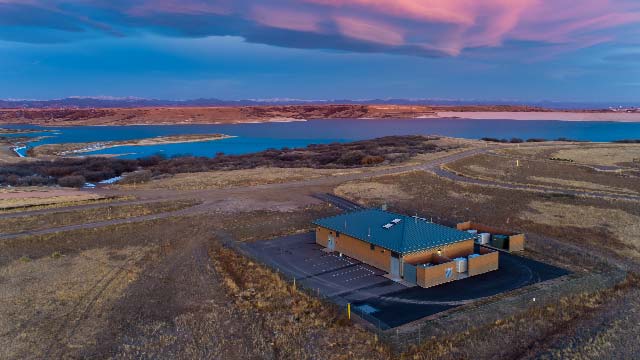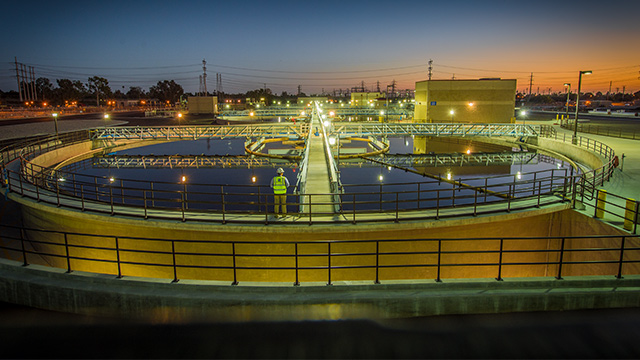The need for asset management continues to grow within the U.S. water industry. However, one of the more surprising results from an industry survey is the general lack of awareness of available asset management frameworks. All of the four major frameworks used within the United States and internationally – including the WERF SIMPLE and the new ISO 55001 – had an awareness level of less than 50 percent, according to a Black & Veatch Strategic Directions: U.S. Water Industry report.
“Many of the top industry issues identified by our annual survey – such as aging infrastructure, managing capital and operational costs, and justifying investments and rate requirements – represent the core tenets and ultimate benefits of asset management,” said Jeffrey Stillman, Asset Management Practice Leader for Black & Veatch.
Many water utility leaders recognize that using asset management concepts can help address their most pressing challenges, Stillman said. Asset management provides a risk-based investment approach that is replicable, auditable and targets the best return on investment.
“The value of asset management is the ability for utility leaders and managers to shift viewpoints from a facility to an objective,” Stillman said. “Asset management goes beyond identifying the age of an asset to quantifying the likelihood and consequence of that asset failing.”
Organizations that have committed to asset management have identified their objectives and service goals and know the role people, processes and assets have in meeting those goals. The frameworks help define procedures and processes.
“These frameworks allow proactive management of the asset life cycle at the tactical level within the context of strategic considerations,” Stillman said. “This includes areas such as the utility’s capital, operational and maintenance expenditures, appetite for risk and levels of service.”
Preferences for Asset Management
The survey looked at factors used for selecting or considering an asset management framework. Top attributes among respondents were “Simple to understand” and “Covers all asset life cycle activities.”
The conflicting nature of simplicity versus comprehensiveness underscores one of the most important challenges for implementing asset management programs,” said Will Williams, Director of Black & Veatch’s Asset Management consulting practice. “Merging complicated and comprehensive approaches, tools and processes into streamlined and easier to understand frameworks is not a simple undertaking.”
He said the various responses in the survey provide a good barometric reading on the U.S. water industry’s level of sophistication in asset management. The rising importance of the role of people within an asset management framework demonstrates growth in overall engagement. It is also a developing realization that good practice needs to focus not just on assets but also on people and the levels of service that assets provide to customers to be truly successful.
“Utility leaders are moving beyond a facility-centric approach to more enterprise-level planning,” Williams said.
Deterioration Models Still Not Widely Used
Asset management programs focus on replacing the right infrastructure or assets in the right way and at the right time. The survey provided a baseline for the basis of repair and replacement decisions among U.S. utilities. As expected, staff knowledge of assets and the condition of each is used by more than 85 percent of all utilities in developing repair and replacement programs.
“It is encouraging to see that more than half of respondents in each size demographic also use detailed condition assessments and risk assessments to provide analytical support to these important financial decisions,” said James Strayer, Black & Veatch Department Manager for Infrastructure Planning and Asset Management. “However, deterioration modeling is only used by 15.5 percent of all respondents – a small number – which is likely a reflection of the lack of understanding or awareness of this capability. Deterioration models are powerful tools for forecasting risks and impacts on service levels.”
Justifying capital expenditure and customer rates is a top issue nationally. Deterioration models will help utility leaders demonstrate the need for specific investments and quantify the potential consequences of inaction, Strayer noted.
As greater levels of intelligence and data collection are implemented across the utility enterprise, such as advanced distribution programs and sensors, obtaining data on asset performance and condition over time will enable the development of deterioration models.
“This appears to be an area of growth and opportunity for the industry,” Strayer said. Approximately 30 percent of respondents stated they are using or planning to improve or implement deterioration models, although this is much greater among large utilities.
Related Tools for Asset Management
The Black & Veatch survey also evaluated the use plans for many common tools and software related to asset management. Respondents reported across the board increases in the use of these supporting elements, or indicated newly planned developments. The top categories included paperless work order systems, mobile applications and managerial dashboards.
“The marked improvement of these elements paints a positive trend,” said Martin Jones, a Principal Consultant within Black & Veatch’s Asset Management practice. “Today’s organizations are advancing all the tools in their portfolios to become the Smart Water Utilities of the future.”
Planning Required for Future Success
Jones said asset management is playing a profound role in building resilient, financially sound organizations. “The vision and commitment to build next generation Smart Water Utilities has led to the continued maturity and adoption of asset management best practices throughout all sizes of organizations in the United States,” he said.
But achieving this vision requires a commitment to continuous organizational improvement, since asset management is not a “checklist.” Utilities do not need to have all the tools and systems in place to begin the process of implementing a best practice framework, Jones noted. Rather, utility leaders can begin with the data they have and integrate new data sources over time.
“The new ISO 55001 standard for asset management, along with other frameworks currently in use and examples of best practice from leading international utilities, offer the opportunity for U.S. utilities to improve their levels of asset management maturity and to realize the broader benefits of asset management,” Jones said.
Conditions in the U.S. water industry mirror those experienced in other parts of the world where asset management has become “business as usual.” The need to repair and rehabilitate aging infrastructure, optimize expenditures and manage risks while providing the required level of service to customers, justifies the need for broader adoption of asset management practices.
“True implementation is not an out-of-the-box, flip-of-the-switch solution,” Jones said. “Comprehensive programs often take three to five years to fully plan and implement. Implementation often involves organization change that requires strong support from the highest levels of the utility. But through this change, utilities will emerge better equipped for the challenges ahead.”








